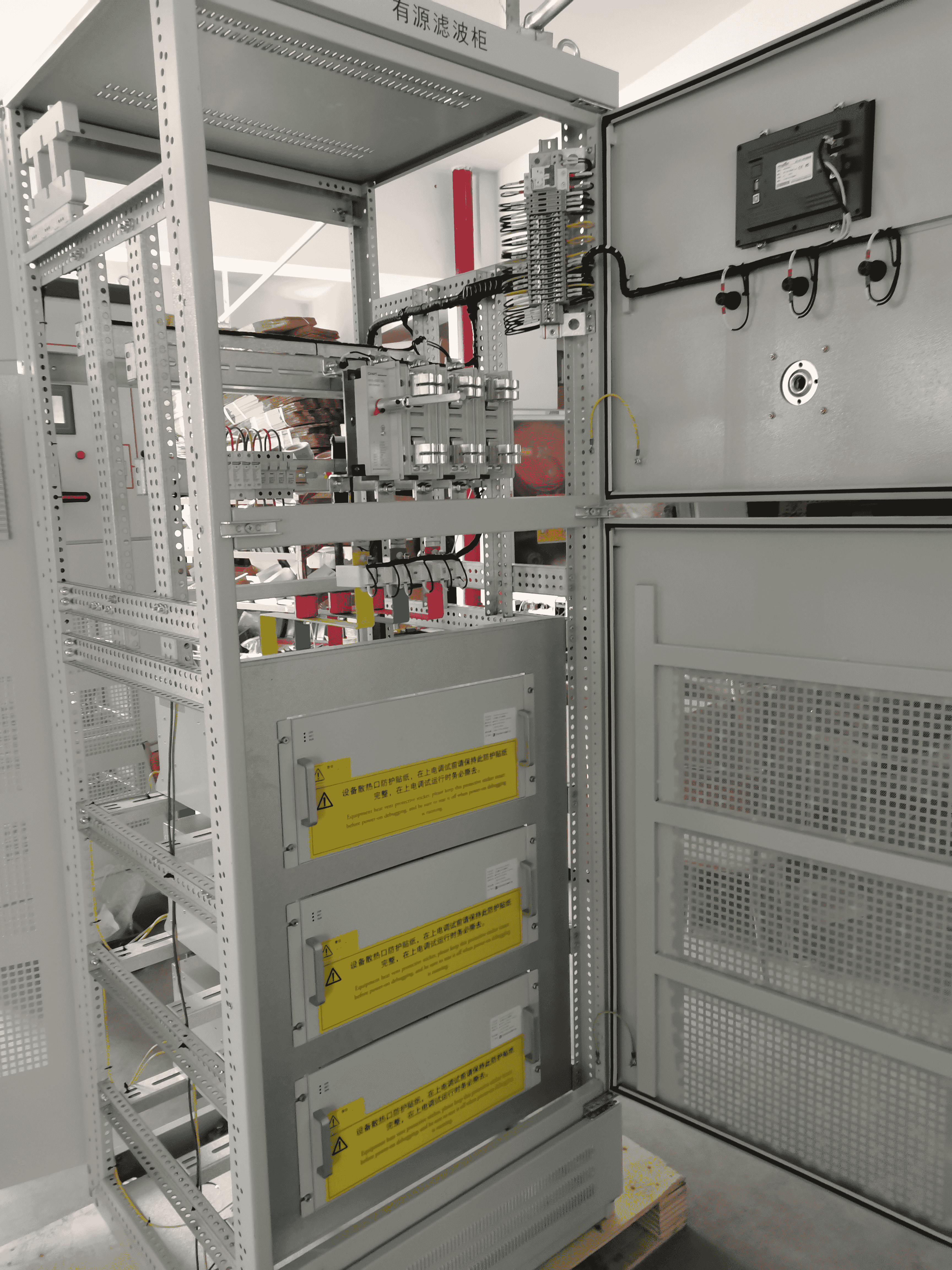Understanding Harmonic Distortion and Its Impact on Equipment Lifespan
What Is Harmonic Distortion and How Does It Damage Electrical Equipment?
When electricity isn't flowing smoothly as a perfect sine wave, we get what's called harmonic distortion. These weird waveform shapes mess with the regular power supply and create those pesky high frequency components that make motors, transformers, and capacitors pull in way more current than they should. The result? Components start running hotter than normal, which puts extra strain on them and breaks down insulation faster than it should happen. Industry reports from last year showed something pretty alarming actually - around 38% of early motor failures can be traced back to this thermal stress caused by harmonics. Now here's where things get interesting. Passive filters try to fix these issues but aren't always effective. Active harmonic mitigators work differently though. They tackle the problem right at the source while everything is still happening, stopping that gradual build up of damage before it gets out of hand for important machinery.
Common Signs of Equipment Degradation Caused by Harmonics
Key indicators of harmonic-related wear include:
- Unusual heat generation in transformers or motors during normal operation
- Erratic behavior in programmable logic controllers (PLCs) or sensors
- Increased vibrations in motor-driven machinery due to torque pulsations
Electrical maintenance logs from 85 industrial facilities show these symptoms precede 62% of unplanned equipment replacements, as reported in the IEEE Power Quality Report 2024.
Data Insight: Percentage of Equipment Failures Linked to Poor Power Quality
Power quality issues such as voltage sags and harmonics cost mid-sized manufacturers an average of $740,000 annually in equipment replacement (Ponemon 2023). The breakdown by failure type is as follows:
| Failure Type | Linked to Harmonics |
|---|---|
| Motor burnout | 41% |
| Capacitor breakdown | 33% |
| Transformer faults | 26% |
Case Study: Motor Overheating in a Textile Manufacturing Plant
A textile plant faced recurring motor failures every 18 months until deploying active harmonic mitigation. Initial measurements revealed total harmonic distortion (THD) at 19%, well above IEEE 519’s recommended 8% limit. After installation:
- Motor temperatures dropped from 155°F to 122°F
- Annual maintenance costs decreased by $48,000
- Lifespan of 50hp motors increased from 1.5 to 4.2 years
These results align with EPA findings that industrial facilities using real-time harmonic correction reduce motor replacements by 72% over five years.
How Active Harmonic Mitigators Prevent Overheating and Thermal Stress
The Science Behind Active Harmonic Mitigator Operation
Active harmonic mitigators (AHMs) use insulated-gate bipolar transistor (IGBT) technology to generate inverse harmonic currents that cancel out distortions in real time. By neutralizing harmonics at their source, AHMs prevent excess current from overloading motor windings and transformer cores, significantly reducing thermal stress.
Real-Time Harmonic Cancellation in Sensitive Electrical Systems
Modern AHMs continuously monitor voltage and current waveforms, adjusting their output within 2 milliseconds to cancel harmonics up to the 50th order. This rapid response reduces heat generation in capacitors by 18–22°C (EPRI 2023), directly mitigating a primary cause of insulation degradation.
Comparative Data: Temperature Reduction in Transformers After Installation
Studies show AHMs lower operating temperatures in 500 kVA transformers by an average of 14°C (IEEE 2022), reducing thermal aging rates by 62%. This improvement corresponds to a 28% increase in transformer lifespan compared to unprotected systems.
Industry Example: Preventing Capacitor Bank Failures in Manufacturing
A mid-sized automotive parts manufacturer eliminated 83% of capacitor bank failures within 18 months of AHM deployment. The system reduced harmonic-induced reactive power from 35 kVAR to 4 kVAR, cutting annual maintenance costs by $47,000 while maintaining 99.4% uptime in critical stamping operations.
Reducing Downtime and Equipment Failures with Active Harmonic Mitigation
Linking Power Quality Improvements to Operational Uptime
When harmonic distortion gets out of control, it messes with voltage stability which puts extra strain on equipment and causes unexpected power outages. Plants that don't manage their harmonics properly face around 217 lost hours every year because motors break down and relays trip unexpectedly. The solution? Active harmonic mitigators work by injecting opposite currents into the system, bringing total harmonic distortion (THD) levels down below 5%, which is considered safe for most operations. By keeping these voltage fluctuations in check, facilities see fewer shutdown incidents overall. Manufacturing sites implementing this technology report between 18 to 22 percent better uptime according to recent findings published in Power Quality Journal back in 2023. For industrial managers looking to maintain consistent production schedules, investing in proper harmonic management makes both operational and financial sense.
Quantifying Downtime Reduction After Active Harmonic Mitigator Deployment
Post-installation data from 47 industrial sites reveals significant improvements:
| Metric | Before Mitigation | After Mitigation | Improvement |
|---|---|---|---|
| Monthly downtime hours | 38 | 9 | 76% |
| Motor replacement rate | 11/year | 3/year | 73% |
| Energy waste from harmonics | 19% | 5% | 74% |
These gains are associated with THD reductions from 25% to under 4% across critical loads.
Performance Metrics: THD Reduction Rates Across Industrial Installations
With response times under 2 milliseconds, active harmonic mitigators are 40% more effective than passive filters at preventing THD-related circuit breaker trips. In data centers, this technology has reduced harmonic-induced cooling system failures by 68% by maintaining current distortion within IEEE 519-2022 limits.
Extending Equipment Longevity Through Cleaner Power and Energy Efficiency
Long-Term Benefits of Stable Voltage Waveforms on Machinery Lifespan
Active harmonic mitigators help protect sensitive industrial gear by getting rid of those pesky harmonic distortions. When power stays clean, it means less heat buildup in things like motor windings and transformer cores. These components actually wear out around 40 percent quicker when exposed to harmonic loads according to that IEEE report from last year. And let's not forget about voltage stability either. Stable voltage keeps insulation from breaking down and stops bearings from wearing away prematurely. This kind of protection can stretch out the life of equipment anywhere from three to five extra years. Facilities that rely heavily on variable speed drives see this benefit most clearly since their systems are particularly vulnerable to these issues.
Energy Efficiency Gains and Reduced Component Wear
Neutralizing harmonic currents before they enter the system reduces energy lost as heat. A 2023 Department of Energy study found facilities achieve 12–18% energy savings after AHM installation, along with:
| Metric | Improvement |
|---|---|
| Transformer temperatures | −19°C |
| Motor vibrations | −34% |
| Capacitor replacements | −82% |
Lower operating temperatures slow electrolytic capacitor drying and semiconductor degradation, enhancing long-term reliability.
Case Study: Extended Lifespan of CNC Machines in a Production Plant
A Tier 1 automotive supplier reduced CNC spindle motor failures by 76% after deploying active harmonic mitigators across its machining centers. Previously, harmonic-induced voltage notches caused 12–15 unplanned downtime events annually. Post-installation results included:
- Average spindle lifespan increased from 8,200 to 14,700 hours
- Servo drive replacement costs dropped by $112,000 per year
- Machine availability improved to 98.6% from 89.1% over 18 months
Active vs. Passive Harmonic Mitigation: Which Offers Better Equipment Protection?
Design Differences and Response Speed in Real-World Applications
Harmonic mitigation works differently depending on whether we're talking about active or passive systems. Active ones monitor conditions in real time and use inverters to cancel out harmonics right when they happen. Passive filters work by using fixed LC circuits that target certain frequencies. Because of this basic distinction, active systems perform much better in situations where things keep changing. The latest data from the 2023 IEEE Power Quality Survey shows something interesting too. When loads change, active mitigators react within less than a millisecond, which is actually three times quicker than what passive filters manage on average (around 3 milliseconds). This speed makes all the difference for protecting delicate equipment against those sudden voltage spikes that can cause serious damage if left unchecked.
Advantages of Adaptive Compensation in Active Harmonic Mitigators
Active systems have this really great ability to adapt, which basically gets rid of those pesky harmonic resonance problems we often see with passive filters. These systems keep changing as the load changes, something that happens all the time in places running variable speed drives or CNC machines. According to the IEEE Power Quality Survey from 2023, most installations (around 92%) manage to keep Total Harmonic Distortion under 5% thanks to these active mitigators. And there's another benefit too: components don't get stressed as much. Frost & Sullivan reported back in 2024 that motors protected by active solutions experience insulation degradation at about 40% slower rate compared to when they're using passive ones. That kind of difference adds up over time for equipment longevity.
Cost-Benefit Analysis: Longevity Protection vs. Initial Investment
Although active harmonic mitigators require a 20–30% higher initial investment than passive filters, they deliver substantial long-term savings through:
- 53% lower maintenance costs due to eliminated capacitor bank replacements
- 28% longer average equipment lifespan for motors and transformers
- 3:1 return on investment over five years from reduced downtime and repair expenses
Data from 127 manufacturing plants indicate that facilities using active mitigation experience 19% fewer unplanned outages annually compared to those relying on passive filters (Energy Efficiency Journal 2024).
FAQ
What is harmonic distortion?
Harmonic distortion refers to the deviation of electrical waveform shapes from a perfect sine wave. This can disrupt power supply and strain electrical components.
How does harmonic distortion impact equipment lifespan?
Harmonic distortion increases the current drawn by motors, transformers, and capacitors, causing overheating, insulation degradation, and early failure of these components.
What are the signs of equipment issues caused by harmonics?
Common indicators include unusual heat generation, erratic behavior in PLCs, and increased vibrations in motor-driven machinery.
How effective are active harmonic mitigators?
Active harmonic mitigators neutralize unwanted harmonics in real time, reducing thermal stress and improving equipment longevity by 28% on average.
What is the difference between active and passive harmonic mitigation?
Active systems continuously monitor and adapt to changing load conditions, while passive systems use fixed circuits to target specific frequencies. Active systems are faster and more effective in dynamic environments.
Table of Contents
- Understanding Harmonic Distortion and Its Impact on Equipment Lifespan
- How Active Harmonic Mitigators Prevent Overheating and Thermal Stress
- Reducing Downtime and Equipment Failures with Active Harmonic Mitigation
- Extending Equipment Longevity Through Cleaner Power and Energy Efficiency
- Active vs. Passive Harmonic Mitigation: Which Offers Better Equipment Protection?
- FAQ

